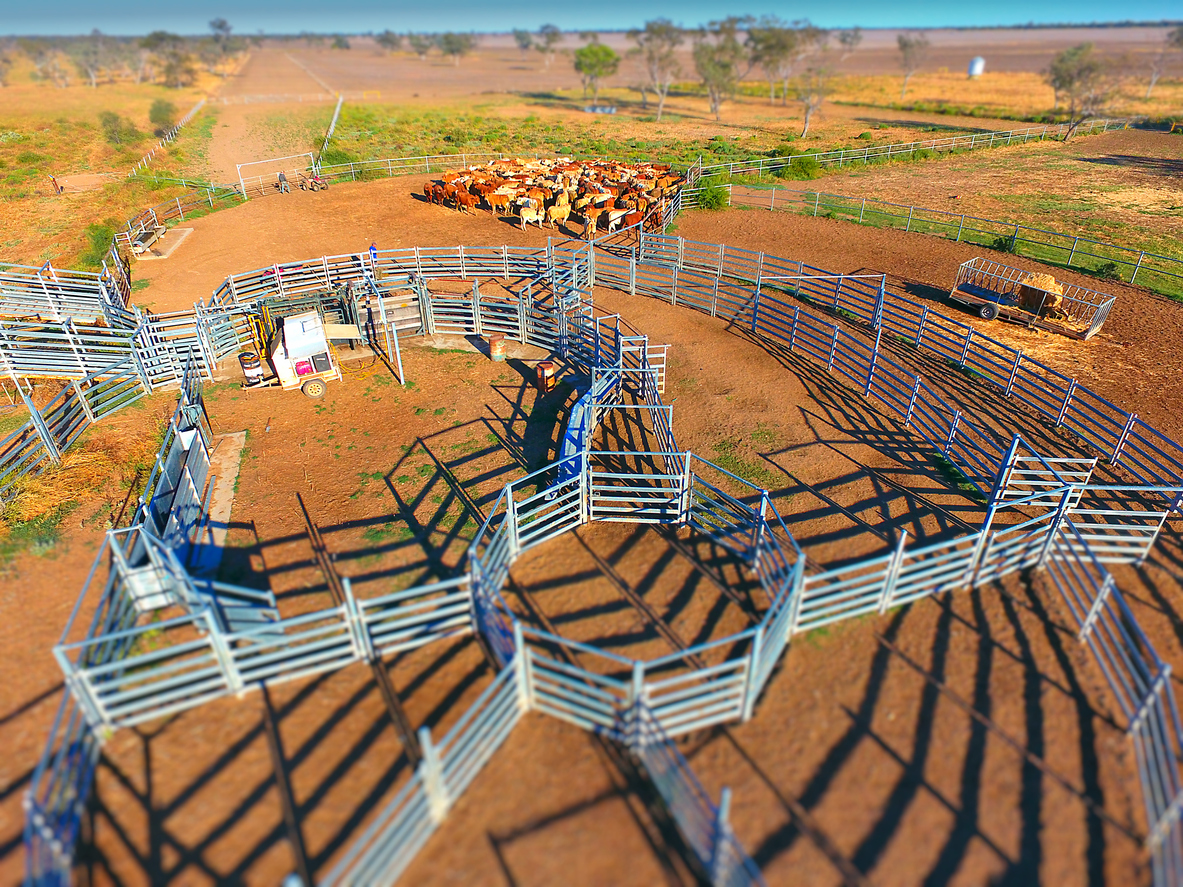Think in Pictures: Like Dr. Grandin (Grades 6-8)
Students will explore cattle flight zones and work as agricultural engineers to design a corral system that uses the research of Dr. Temple Grandin.Grades 6-8

Background
Lesson Activities
Recommended Companion Resources
Credits
Author
Oklahoma Agriculture in the Classroom
Sources
Some information in the Background Agricultural Connections and Activity 3 were adapted from the California Foundation for Agriculture in the Classroom lesson Build it Better.
Standards
Indiana Content Area Standards
-
English Language Arts.Grade 6.RN.1
Read a variety of nonfiction within a range of complexity appropriate for grades 6-8. By the end of grade 6, students interact with texts proficiently and independently at the low end of the range and with scaffolding as needed at the high end of the range.
- Key Ideas and Textual Support.6.RN.2.1: Analyze what a text says explicitly as well as draw inferences from the text through citing textual evidence.
-
English Language Arts.Grade 6.SL.1
Listen actively and adjust the use of spoken language (e.g., conventions, style, vocabulary) to communicate effectively with a variety of audiences and for different purposes.
- Discussion and Collaboration.6.SL.2.2: Elaborate and reflect on ideas under discussion by identifying specific evidence from materials under study and other resources.
- Presentation of Knowledge and Ideas.6.SL.4.1: Present claims and findings, sequencing ideas logically and using pertinent descriptions, facts, and details to accentuate main ideas or themes; using appropriate eye contact, adequate volume, and clear pronunciation.
-
English Language Arts.Grade 7.RN.1
Read a variety of nonfiction within a range of complexity appropriate for grades 6-8. By the end of grade 7, students interact with texts proficiently and independently at the middle of the range and with scaffolding as needed for texts at the high end of the range.
- Key Ideas and Textual Support.7.RN.2.1: Analyze what a text says explicitly as well as draw inferences from the text through citing several pieces of textual evidence.
-
English Language Arts.Grade 7.SL.1
Listen actively and adjust the use of spoken language (e.g., conventions, style, vocabulary) to communicate effectively with a variety of audiences and for different purposes.
- Discussion and Collaboration.7.SL.2.1: Engage effectively in a range of collaborative discussions (e.g., one-on-one, in groups, and teacher-led) on grade- appropriate topics, texts, and issues, building on others ideas and expressing personal ideas clearly.
- Discussion and Collaboration.7.SL.2.2: Investigate and reflect on ideas under discussion by identifying specific evidence from materials under study and other resources.
- Presentation of Knowledge and Ideas.7.SL.4.1: Present claims and findings, emphasizing salient points in a focused, coherent manner with pertinent descriptions, facts, details, and examples; use appropriate eye contact, adequate volume, and clear pronunciation.
-
English Language Arts.Grade 8.RN.1
Read a variety of nonfiction within a range of complexity appropriate for grades 6-8. By the end of grade 8, students interact with texts proficiently and independently.
- Key Ideas and Textual Support.8.RN.2.1: Analyze what a text says explicitly as well as draw inferences from the text through strong and supportive textual evidence.
-
English Language Arts.Grade 8.SL.1
Listen actively and adjust the use of spoken language (e.g., conventions, style, vocabulary) to communicate effectively with a variety of audiences and for different purposes.
- Discussion and Collaboration.8.SL.2.1: Engage effectively in a range of collaborative discussions (e.g., one-on-one, in groups, and teacher-led) on grade- appropriate topics, texts, and issues, building on others ideas and expressing personal ideas clearly.
- Discussion and Collaboration.8.SL.2.2: Examine, analyze, and reflect on ideas under discussion by identifying specific evidence from materials under study and other resources.
- Presentation of Knowledge and Ideas.8.SL.4.1: Present claims and findings, emphasizing salient points in a focused, coherent manner with relevant evidence, sound valid reasoning, and well-chosen details; use appropriate eye contact, adequate volume, and clear pronunciation.